Soot deposits

Signs
The presence of dry soot deposits indicates a too rich mixture or a weak ignition spark. Causes misfiring, starting difficulties and engine instability.
Recommendations
Check if the air filter is clogged, if the fuel level is set too high, if the air damper is sticking, and if the distributor cap contacts are worn out. To protect against deposits, use a spark plug with a longer core.
Oil deposits

Signs
Oily coatings caused by incomplete oil removal. Oil seeps through worn valve guides or piston rings into the combustion chamber. This causes starting difficulties, misfiring and engine instability.
Recommendations
Correct the mechanical condition by carrying out the necessary repairs and install new spark plugs.
Too hot candle

Signs
Blistered white insulator, corroded electrode and no deposits. This will shorten the life of the spark plug.
Recommendations
Check if the spark plug is in the correct temperature range, if it is not igniting too early (ignition timing set too early), whether a lean fuel mixture is being used, whether there is air leakage in the intake manifold and whether the valves are stuck. Check the coolant level and make sure the radiator is not clogged.
Early ignition

Signs
Melted electrodes. The insulators are white, but may be dirty due to misfiring or debris in the combustion chamber. Early ignition can damage the engine.
Recommendations
Check the correct temperature range of the candle; check if the ignition is set too early, if the fuel mixture is too lean, if the cooling system is clogged and if the lubricant is missing.
Glazing
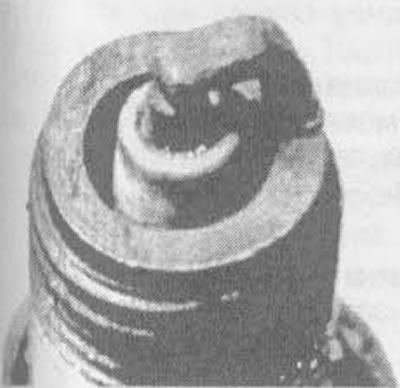
Signs
Yellowed at the insulator, as if "glazed" appearance. This indicates that with strong acceleration, the temperatures in the combustion chamber rise sharply. Normal deposits melt and form conductive coatings. At high speeds, this causes misfiring.
Recommendations
Install new spark plugs. Consider using cooler spark plugs if you don't want to change your driving style.
Covering the spark plug gap with a bridge
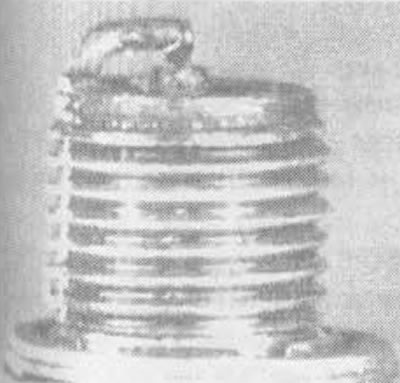
Signs
Deposits of combustion products lay between the electrodes. Strong deposits accumulated and formed a bridge in the interelectrode gap. The formation of a spark in the candle stops, which leads to the absence of ignition of the combustible mixture in the cylinder.
Recommendations
Locate the failed spark plug and remove deposits between the electrodes.
Normal candle
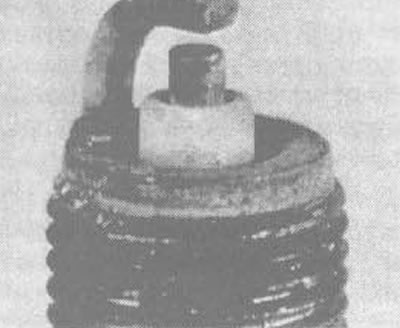
Signs
Brown to reddish brown color and slight electrode wear. Correct motor thermal conditions and operating conditions are selected.
Recommendations
When replacing spark plugs, use new spark plugs of the same temperature range.
Ash deposits
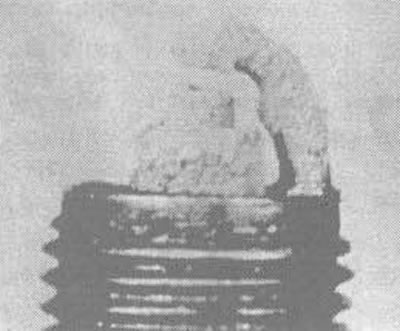
Signs
Light brown deposits form on the sides, center electrodes, or both. They are formed from oil and/or fuel additives. Excessive amounts of these deposits can shield the spark, causing misfiring and erratic engine performance under acceleration.
Recommendations
If excessive deposits build up in a short time or at low mileage, install new valve guide seals to prevent oil from entering the combustion chambers. Try also changing the brand of gasoline you are using.
Worn candle
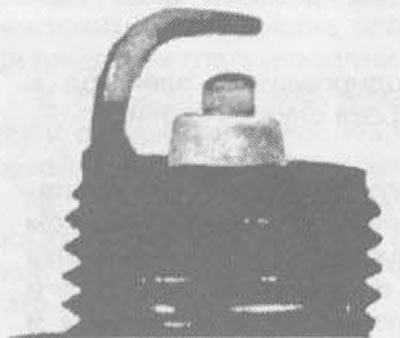
Signs
Rounded edges of the electrodes with a small amount of deposits on the ignition end. Normal color. Causes engine starting difficulties in wet or cold weather and results in increased fuel consumption.
Recommendations
Replace the spark plugs with new ones of the same temperature.
Detonation

Signs
Possible splitting or cracking of insulators. An incorrect electrode gap setting technique can also lead to crushing of the insulator head. All this can lead to piston damage.
Recommendations
Make sure the gasoline meets the requirements of the engine. Be careful when setting gaps on new spark plugs. Avoid motor overload (operation at low speeds at wide open throttle).
Spotted deposits

Signs
After long periods of misfiring, deposits can be dispersed when normal combustion temperatures are restored after proper adjustment. At high speeds, deposits fly towards the hot insulator causing misfiring.
Recommendations
Replace the spark plugs with new ones or clean the spark plugs and reinstall them.
Mechanical damage to the candle

Signs
Such damage can be caused by a foreign body in the combustion chamber or by the piston hitting a spark plug that is too long. They result in no spark in the cylinder and may damage the piston.
Recommendations
Remove the foreign body from the engine and/or install a spark plug with the correct length of the screwed part.
